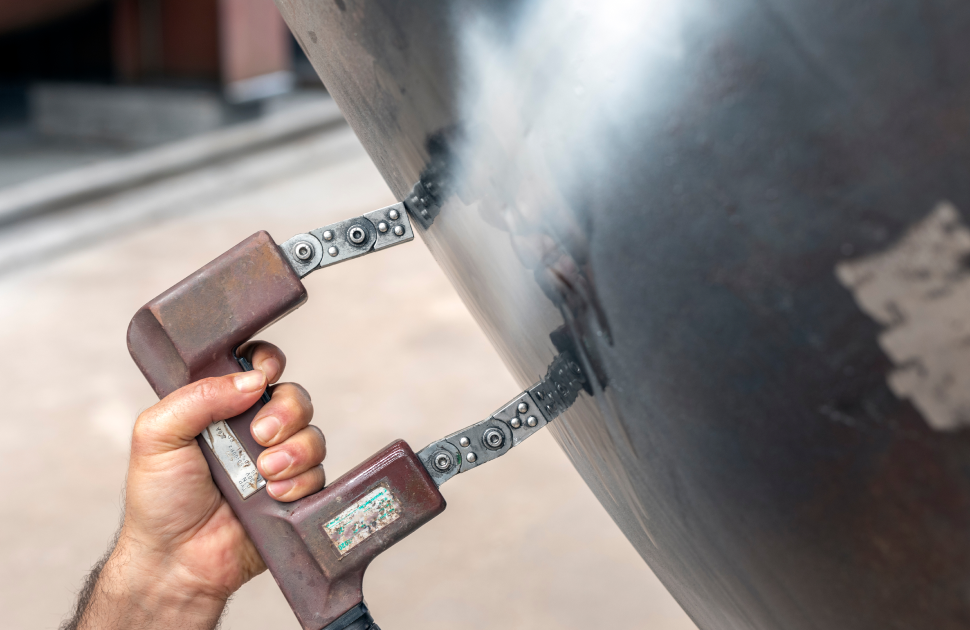Magnetic Particle Testing (MPT), also known as Magnetic Particle Inspection (MPI), is a non-destructive testing (NDT) method used to detect surface and near-surface discontinuities in ferromagnetic materials.
This method is widely used in the aerospace, automotive, marine, and manufacturing industries to inspect welds, castings, forgings, and other components for defects.
The principle of Magnetic Particle Testing is based on the magnetic properties of ferromagnetic materials. Ferromagnetic materials, such as iron, nickel, and cobalt, are strongly attracted by a magnetic field.
When a Magnetic field is applied to a ferromagnetic material, the magnetic field lines flow through the material, forming a pattern. When a discontinuity, such as a crack, is present in the material, the magnetic field lines are distorted and create a leakage field that can be detected on the surface of the material.
The process of magnetic particle testing involves four main steps: magnetization, application of magnetic particles, interpretation, and demagnetization.
Magnetization:
The first step is to magnetize the material under inspection. This is usually done by applying a strong magnetic field to the component.
The magnetic field can be applied using an electromagnetic yoke, permanent magnet, or a current-carrying coil.
The magnetic field should be applied perpendicular to the surface of the component, and the direction of the magnetic field should be changed several times during the inspection.
Application of magnetic particles:
The next step is to apply magnetic particles to the surface of the material.
The magnetic particles can be in the form of dry powder or suspended in a liquid carrier.
The particles are attracted to the leakage field created by the discontinuity and form an indication on the surface of the material.
The magnetic particles can be applied manually using a spray gun, or automatically using a wet or dry Magnetic Particle Inspection system.
Interpretation:
The third step is the interpretation of the indications. The indications can be visible to the naked eye, or they can be detected using a magnetic particle inspection instrument.
The indications are evaluated based on their size, shape, location, and orientation. The indications can be classified as relevant or non-relevant, depending on their size and location.
Demagnetization:
The final step is to demagnetize the material. This is usually done by applying an alternating current to the material.
The demagnetization process is important because residual magnetism can affect the properties of the material.
Magnetic particle testing has several advantages over other NDT Methods.
It is a relatively fast and easy method to detect surface and near-surface discontinuities. It can detect both longitudinal and transverse defects.
It can also detect defects that are not visible to the naked eye. Magnetic particle testing can be used on a wide range of ferromagnetic materials, including cast iron, steel, nickel, and cobalt.
However, there are also some limitations to Magnetic Particle Testing. It can only be used on ferromagnetic materials, which limits its applicability.
Magnetic particle testing is also limited to detecting surface and near-surface discontinuities.
It cannot detect defects that are located deeper in the material. The interpretation of the indications can be subjective and may require a skilled operator.
There are several techniques used in magnetic particle testing. The most common NDT Techniques are the dry method and the wet method.
Dry method:
In the dry method, dry magnetic particles are applied to the surface of the material using a hand-held applicator or a powder feeder.
The particles are attracted to the leakage field created by the discontinuity and form an indication on the surface of the material.
The dry method is faster than the wet method and can be used in areas where the use of liquid is not desirable.

.png)








